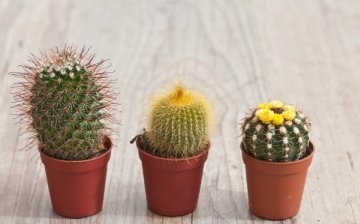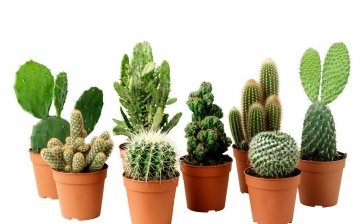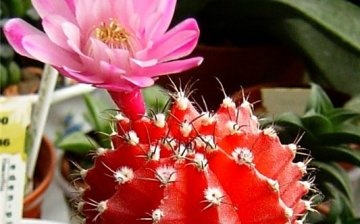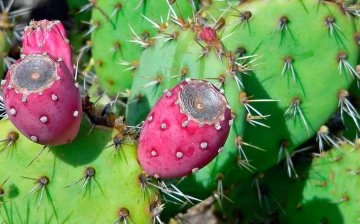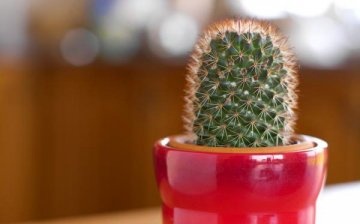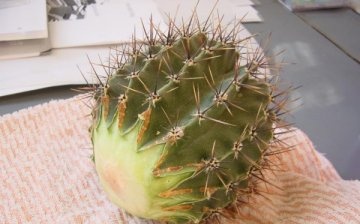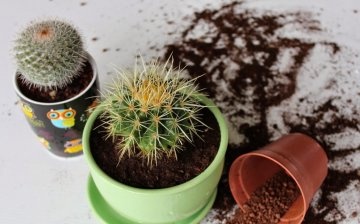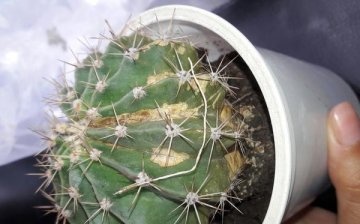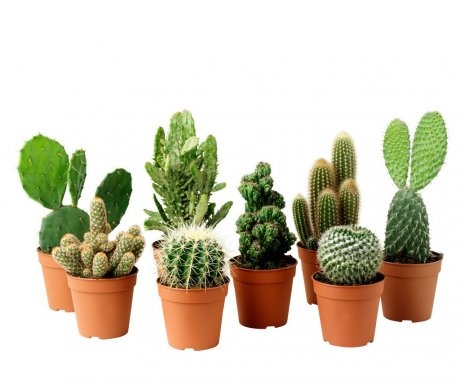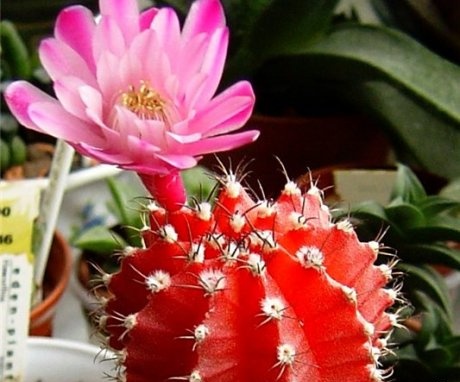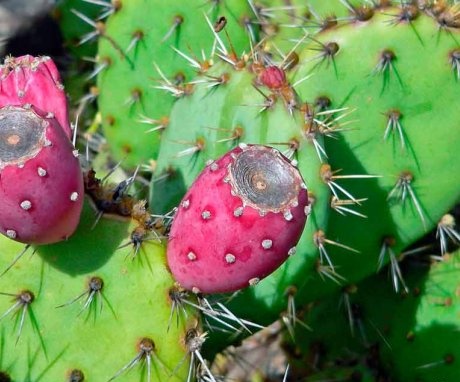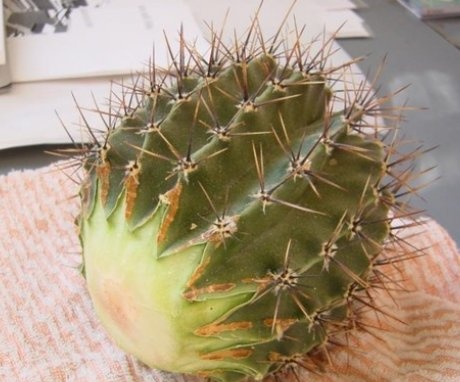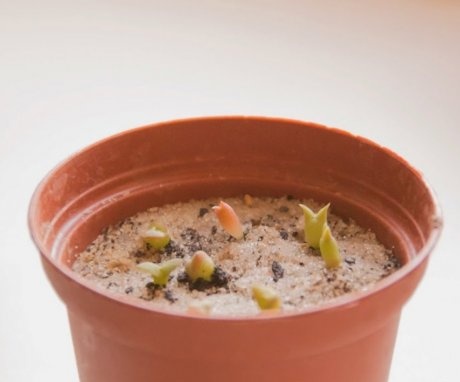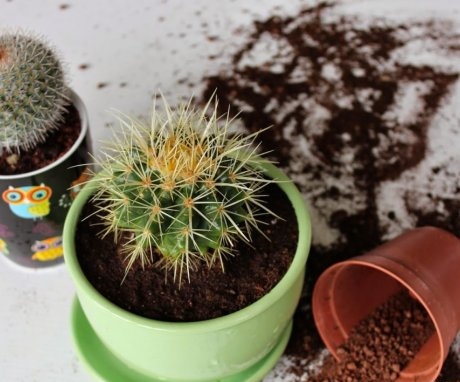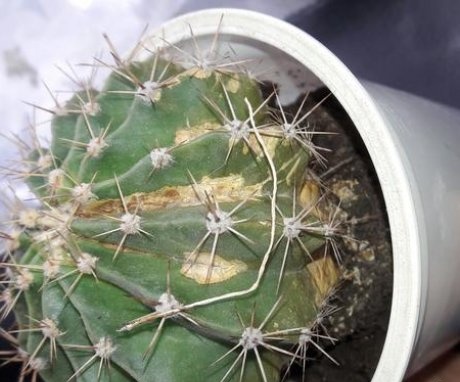The most popular types of indoor cacti
Existing types of home cactus impress with their variety. Their shapes and sizes are unique and distinctive for each type of plant. Since ancient times, cacti (cloves) have become pet plants for fans of flora and fauna. However, often these plants are not given special importance, but in vain: cacti are an excellent decorative element.
Content:
- A few words about indoor cacti
- Types of indoor cacti and their description
- Growing conditions and care tips
- Reproduction and planting
- Transfer
- Diseases and pests
A few words about indoor cacti
Houseplant collectors have long been convinced how easy and quick it is to collect and increase the number of these favorite flowering plants. On the contrary, those lovers who treat house plants without much trepidation rejoice in the unpretentiousness of cacti. After all, they require minimal maintenance, which is affordable and simple for any grower:
- cloves are content with rather rare, not always regular watering
- pruning and spraying the cactus is absolutely not required
- flowering for many years successfully develop without transplantation
The only "drawback" of the cactus is the long thorns with which it is covered from top to bottom, however, it is this feature that gives the plant originality. Fans of non-trivial decoration methods should remember the elementary safety rules for working with a thorny decoration:
- carry thick mittens
- use thick paper folded in several layers
Observing these simple precautions, you can safely carry out any manipulations with the plant, without fear of injury. Despite the undemandingness of cacti, you should not be careless about caring for them and leave them to "survive" without the care of the owner. This is fundamentally the wrong approach. If thorny beauties start up in the house, it is worth creating the proper conditions for them, the plants will respond to their care with an exemplary appearance and decorate any interior with themselves.
Types of indoor cacti and their description
The views of amateur flower growers are riveted by the species diversity and beauty of the flowering of cacti. Cloves require only a few conditions:
- suitable soil
- sunny location
- drainage
- sensitive care of the owner
The following types of cacti will be an excellent decor element for any apartment, with proper care.
- Gymnokalycium Mikhanovich. A very unusual plant, attracting with its beauty, begins to delight the owners with flowers at a young age, funnel-shaped buds of a white, pink, red saturated shade. Quite wide, elongated cactus stem, brown or grayish-green in color, covered with thick triangular ribs (up to 10 pcs. On one plant). The plant is great for life and development at home. The most important factor favorable for the flowering process is free access to sunlight. However, in the summer, the owner needs to rearrange the flowering plant away from direct sunlight - at this stage, an excessive amount of them affects the cactus, rather, negatively.
- Echinocactus iridescent.The original clove, reaching a height of 45 cm, is distinguished, first of all, by its shape - oval or cylindrical. The color scheme of shades, pink and purple, is arranged figuratively along the stem of the plant. The cactus prefers the west and south side of the world. It is not required to create a shadow for him, from the sun's rays. The rainbow clove plant tolerates dry air masses well, however, spraying will not hurt it. The humidification procedure is carried out using heated water, observing the regularity of time intervals, from one spraying to another. Transplant Echinocactus should be carried out as carefully as possible, observing the utmost care - the roots of the plant are brittle and do not tolerate aggressive effects.
- Strauss's Cleistocactus. This horizontally located flower, in the form of a pillar, is completely covered with white hairs and spines. In height, Cleistocactus can grow up to a meter. The beauty and uniqueness of the Strauss cactus is in its extremely abundant bloom with tubular flowers that remain undiscovered. This type of flowering needs an abundance of light, so the best solution is to place the plant in the sunniest, light-filled room. The south side is best suited for this purpose. However, the grower will need to create a shade for the Cleistocactus, during the highest solar activity - at noon. The soil in which the clove is planted should be regularly fertilized with phosphorus-containing dressings. They are added to the ground, without preliminary moisture.
- Prickly pear. A highly popular species of cactus is this needle-like plant, equipped with small thorns, the ends of which are serrated. Touching Opuntia without protective gloves is quite dangerous - it is inevitable that the skin will be injured by its sharp needles. The plant reaches a height of up to 30 cm at home. The subspecies of Opuntia Small-haired are striking in their diversity. The cactus requires increased watering in the summer period of life, in the evening. In this case, getting the stems wet should be avoided. The prickly pear shoots out in unpredictable places.
- Rozhdestvennik (Schlumberger). The cactus pleases the eye with a very abundant winter flowering. At this time of year, Schlumberger needs intense hydration. Subject to the regularity of watering, the cactus will charm the owner with delicate flowers that are unexpected on severe frosty days. The Christmas man does not need active light, it is necessary to create diffused lighting for him, for the most comfortable development. Delicate flowers are up to 8 cm long, bloom on the downward stems of the plant. The color scheme of the buds is distinguished by an amazing variety of shades. The cactus will become a touching, romantic gift for Christmas - that is why it is named Christmas.
- Whitening Trichocereus. This tall carnation plant reaches a length of one and a half meters. Funnel-shaped buds have a delicate white tint and a pleasant aroma. Trichocereus flowers are large, up to 20 cm in diameter, very beautiful. The stems of a plant depend on its species. Basically, they are yellowish-greenish and grow in an upright or tilted position. The ribbed surface of Trichocereus is equipped with long spines, reaching a length of 4 cm, which become longer the closer they are to the center of the cactus. The delicate bright smell of the flowers of the plant is one of its indisputable advantages. The whitening cactus is unpretentious and hardy. For its active, full-fledged development, three conditions are required: high-quality watering, warmth and an abundance of sunlight.
- Mammillaria. One of the most common types of cacti that are especially loved by owners due to their easy maintenance. Mammillaria is covered with long and rather soft spines, more resembling hairs. The plant includes many subspecies, up to 500 items.Each variety of flowering has an individual stem shape - spherical or cylindrical. A distinctive feature of Mammillaria is the presence of many papillae located directly on the stem. From the cavities between them, flower buds bloom - white, red, purple.
- Tiny Rebutia. Small ball-shaped plants reach a size of 10 cm. Rebutia flowers are found in unusual places - at the foot of the stem. The color range of plant buds is orange, reddish, pinkish. The spines of the Rebutia have a golden hue. The owner should spray the plant regularly as it prefers humid air. The rest of the rules for caring for a cactus are the same as for its counterparts.
Growing conditions and care tips

The generally accepted opinion that cacti do not require any care from the owner and do not require attention and care is erroneous. Clove plants have adapted well to survive in the desert, storing water in dense stems and using it sparingly during periods of drought.
Despite such adaptability, in the hands of a caring owner, the thorny pet reveals its best sides and shows itself in all its glory, literally flourishing from attention.
Basic rules of care:
- "Spiny pets" need a winter period of rest. The owner should not be allowed to grow the plant at this time, because, otherwise, it may lose its beauty. In the cold season, cloves are placed on window sills, placing them on special stands - in order to avoid hypothermia root system.
- In spring, plant care changes. Cacti, at this time, require more intensive watering and moisturizing, using a spray bottle, at least 2 times a month.
- In the summer, cloves need shelter from bright sunlight that can harm them, up to causing burns. Flower pots, on hot days, must be placed in boxes filled with soil to avoid overheating of the plants.
- With the onset of autumn, cloves are transferred to the apartment (if they were planted in open ground or were on the balcony).
It should be noted that an adult plant has less need for watering than a young one. In large specimens, considerable moisture reserves have already been accumulated. Most of all, cacti need moisture in summer, during this period they need to be watered much more abundantly, preferably in the evening. The hottest days require active watering; with a decrease in air temperature, the intensity of humidification decreases.
In autumn days, watering is moderate. In winter, however, it is reduced to a minimum, so that plants do not grow at this unfavorable time for them. It should be remembered: if the owner does not reduce the intensity of watering in winter, the plant will not enter the required dormancy phase. Subsequently, due to such improper care, it becomes emaciated and does not bloom.
Reproduction and planting
Plants can be propagated in several ways:
- cuttings of plant stems
- by its seeds
- vaccinations
Process cuttings carried out in the spring and early summer. The shoots located on the top and sides of the plant are used as cuttings. If the plant is leafy, the cuttings are its leaves:
- A drainage is placed at the bottom of the flower pot, over which soil (peat) mixed with sand is laid, and coarse river soil is poured over it.
- Shoots are cut, dried for about 10 days. When a vitreous film forms at the cut site, the cuttings are planted in the ground, immersed 1 cm deep into the soil.
- To ensure the stability of the cutting, it is supported with a peg and covered with a jar.
- Sections of the uterine cactus are dried in the sun, wiped with alcohol tincture and treated with coal powder.
- The soil under the cuttings is moistened quite a bit, starting watering when the shoots are hardened.
Cuttings can be harvested in the fall, keeping them until the spring, when their rooting is most successful. In addition, the reproduction of a plant can be carried out with the help of "children" on its stems.
Reproduction by seeds. Seed germination of cactus occurs, at most, in a week. However, there are specimens, the emergence of which takes up to a month. Seeds are sown in late April and early May, this is the best time for such a procedure.
Sowing is done as follows:
- The container with seeds is heated at a temperature of up to 30 degrees.
- In the pot in which the sowing is carried out, large holes must be present, they are covered with a layer of drainage: shards, crushed stone, wood coal, river soil.
- The drainage is covered with a layer of soil, not reaching the edge of the container by 1 cm.
- Cactus seeds are covered with soil a little, pressing with a board. If the seeds are small, no powder is required.
- The container with the seed is placed in slightly warmed water to allow moisture to penetrate through the holes in the bottom.
- Seeds are covered with glass, placed in heat.
- With the emergence of seedlings, the container is placed in a bright place, but not in direct sunlight.
- The temperature should be at least 20 degrees.
- With the growth of seedlings, the frequency of watering is increased, the surface of the glass is raised.
- When thorns form on young cacti, they are transplanted without disturbing the roots and without removing the soil layer from them.
- It is necessary to create a shade for the seedlings, do not water them for 24 hours and do not air them for 3 days.
- The soil should be loosened, sprinkled with chopped charcoal. When the soil becomes acidic, it must be changed.
To accelerate growth and increase flowering, improve the root system of plants, with the onset of the warm season, they are carried out vaccination... The diameter and juiciness of the scion and rootstock should be approximately the same:
- Having cut off the stock, an additional thin cut is carried out on it in order to prevent drying out. The graft is prepared in the same way.
- The slices are superimposed on each other, achieving the coincidence of the centers.
- A layer of cotton wool is applied to the upper part of the scion and tied to the stock.
- The room must be kept at a temperature of at least 20 degrees.
- Vaccinations are covered with jars, placed in a lighted place.
- Spraying is not necessary for several days.
- The bandage is removed after a week.
Transfer
It is better to transplant cloves in the spring, during their growth. Having made the decision to transplant, the owner must stop watering 2-3 days before the procedure. This is necessary so that the soil does not cling to the roots of the plant when it is moved.
To transplant a cactus, you need:
- wrap it in a thick layer of paper and slowly remove it from the ground
- remove rotten and damaged plant roots
- cut the cut with crushed coal
- sprinkle the base of the stem with sand to avoid rotting
Mature cacti are transplanted after 1-2 years, young ones - every year.
Diseases and pests
The most negative effect on cacti is excessive soil moisture, especially in winter. Because of this, putrefactive lesions of plants are possible. To cure Cactus, it is taken out of the soil, the root system is washed, removing all rot and damage. Then they are dried, the roots are treated with antiseptics and transplanted into new soil, without watering until the plant begins to grow. Expose the clove to light, avoiding direct sunlight.
In addition, pests can also cause damage to a cactus:
- spider mite: simple washing with water or spraying, weakly concentrated tobacco solution, chamomile infusion - successfully kill the pest; after the processing procedure, wipe the cactus with water
- shield aphid: spray the plant with a tobacco-soap solution with the addition of kerosene; clusters of larvae are removed with a toothbrush
- mealybug: can be easily removed with a moistened cotton swab; processing with insecticide
Compliance with the above recommendations for care, will provide a prickly pet with beauty and healthy development. The plant will undoubtedly respond to care with abundant flowering and decorate the master's apartment.
More information can be found in the video:



